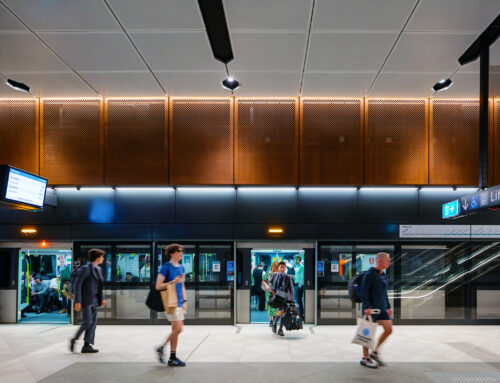This aged Care building required 24/7 operation for services such as ventilation, heating and air conditioning which translates to noisy equipment for internal and external areas (fans, fan coil units and Outdoor Units), requiring careful consideration for the acoustic design right from the onset of the project.
From the legislative perspective, the project started and was awarded Resource Consent under the now superseded North Shore District Plan with stringent Boundary noise levels to comply with. During later stages of the design, changes were introduced to the mechanical design and new equipment were added to one of the development boundaries. These new changes triggered the requirement to comply with the Auckland Unitary Plan (AUP) as the current legal instrument to regulate the permitted boundary noise levels during day and night operation.
A review of the noise control requirements was taken in place with these new changes and under the new applicable legal frame-work. Additional acoustic treatment was recommended to the units operating adjacent the boundary to meet the applicable boundary noise levels.
Construction programme pressures meant that, late during the construction phase, some of the outdoor units near the boundary were installed and tested without the recommended discharge silencers in different operating conditions across several days which resulted in formal complaints being raised by the neighbouring residents. Shortly after, the construction team was able to transport and install the required attenuators, however the neighbours became especially sensitive to the noise produced from this equipment and continued the complaints.
The NDY Acoustics team was consulted and the design team had met to assess the most pragmatic technical solutions to reduce the boundary noise levels and address the complaints. Despite the technical options available to reduce the noise on this boundary units such as the installation of acoustic screens, larger attenuators or acoustic louvers, NDY acoustics considered that the most practical approach was to, review the operation of the units and, with the project mechanical engineers blessing, recommend retrofitting a quiet mode (reduced fan speed) of operation on the louder units before apply further, more costly noise control measures.
Day-time measurements were conducted, and the day time operation was confirmed to be under the required maximum boundary noise levels. Night time assessments (After 10:00 pm) were also carried out in conjunction with the mechanical designer and the mechanical contractor and the result was favourable with the operation able to meet the boundary criteria.
This pragmatic approach avoided the installation of additional costly acoustic treatment and confirmed that with the acoustic design recommendations installed on site, compliance with the boundary noise could be achieve and further expenses for the client and the project were not incurred.
To date no more complaints were received and the development is currently operating, this proves that a practical pragmatic approach and a good team work between consultants can be key for the project’s success.










